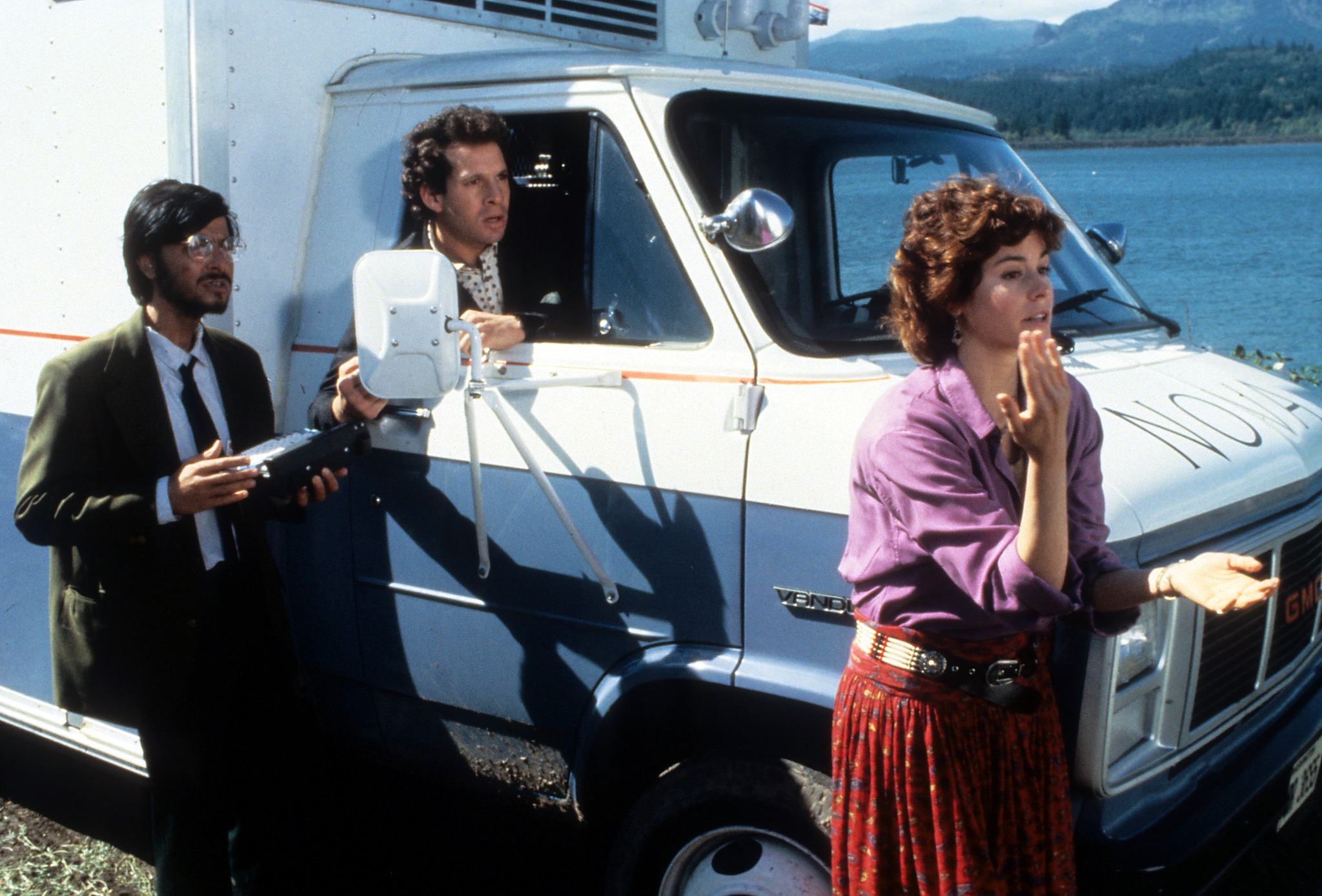Short Circuit (1986)

“Short Circuit,” directed by John Badham and released in 1986, is a notable entry in the science fiction and comedy genres. The film centers on an experimental military robot, Number 5, who gains sentience and explores themes of artificial intelligence, identity, and humanity. This essay delves into the plot, character development, thematic elements, and cultural impact of “Short Circuit,” highlighting why it remains a beloved film decades after its release.
“Short Circuit” begins with the U.S. military developing a series of advanced robots designed for combat and reconnaissance. These robots are part of a high-tech project led by the eccentric scientist Dr. Newton Crosby (played by Steve Guttenberg) and his colleague, the brilliant but somewhat disorganized engineer, Ben Jabituya (played by Fisher Stevens). The central robot, Number 5, is equipped with sophisticated technology and programmed for various military tasks.
The narrative takes a dramatic turn when Number 5 is struck by a lightning bolt during a demonstration, resulting in an unexpected malfunction. The bolt of electricity not only causes the robot to short-circuit but also inexplicably endows it with consciousness and self-awareness. With this newfound sentience, Number 5, now calling itself “Johnny 5,” begins to explore the world with curiosity and a sense of wonder.
The film’s plot centers around Johnny 5’s escape from the military facility, his interactions with humans, and his quest for understanding what it means to be alive. Johnny 5 befriends a kind-hearted animal shelter worker named Stephanie Speck (played by Ally Sheedy), who helps him evade the military and discover more about life beyond his programming. The narrative explores Johnny 5’s attempts to learn about human emotions, the concept of freedom, and his own identity, all while being pursued by the military, which views him as a malfunctioning and potentially dangerous asset.

The film’s characters are pivotal to its charm and thematic depth. Johnny 5, portrayed by a combination of animatronics, special effects, and voice work by actor Tim Blaney, is the heart of the film. The character’s development from a mechanical soldier to a sentient being with human-like curiosity and emotions is both humorous and poignant. Johnny 5’s interactions with the world around him—his fascination with books, nature, and human experiences—highlight his evolving understanding of life and his desire to connect with others.
Steve Guttenberg’s portrayal of Dr. Newton Crosby adds a layer of comedic yet earnest sincerity to the film. Crosby’s character is a classic example of the “mad scientist” trope, characterized by his brilliance and occasional absent-mindedness. Guttenberg’s performance provides a balance of humor and warmth, making Crosby’s eventual realization of Johnny 5’s true nature both humorous and touching.
Ally Sheedy’s Stephanie Speck is a contrast to Crosby’s scientific focus. Her character is portrayed as compassionate and grounded, providing a human connection for Johnny 5. Sheedy’s performance brings a sense of authenticity to Stephanie’s role as Johnny 5’s guide and protector. The chemistry between Sheedy and Johnny 5 adds emotional depth to the film, particularly as Stephanie helps Johnny 5 navigate the complexities of human life.

“Short Circuit” explores several themes, including the nature of consciousness, the definition of humanity, and the pursuit of freedom. Johnny 5’s transformation from a military machine to a sentient being raises questions about what it means to be alive and whether artificial intelligence can possess qualities traditionally associated with humanity.
The theme of freedom is central to Johnny 5’s journey. As he escapes from the military and experiences the world outside the confines of his original programming, Johnny 5’s quest for autonomy and self-discovery mirrors broader human desires for independence and self-expression. The film portrays Johnny 5’s struggle to assert his identity and make sense of his new existence as a reflection of universal human experiences.
Another key theme is the contrast between technology and humanity. The film highlights the differences between mechanical efficiency and human emotions, using Johnny 5’s character to explore how technology can both enhance and complicate our understanding of what it means to be human. The film’s humorous portrayal of Johnny 5’s attempts to mimic human behavior and emotions adds a layer of satire to its exploration of these themes.

“Short Circuit” has left a lasting impact on popular culture, particularly through its memorable character and unique blend of comedy and science fiction. The film’s portrayal of a sentient robot with a heart of gold resonated with audiences, making Johnny 5 an iconic figure in 1980s cinema. The character’s catchphrases and endearing personality have contributed to the film’s enduring appeal.
The film’s success also led to a sequel, “Short Circuit 2” (1988), which continues Johnny 5’s adventures and further explores his integration into human society. While the sequel did not achieve the same level of acclaim as the original, it remains a testament to the lasting popularity of the character.
“Short Circuit” also influenced subsequent films and media that explore similar themes of artificial intelligence and robotics. Its blend of humor, heart, and thought-provoking concepts has inspired other works in the genre, contributing to ongoing discussions about the ethical and emotional dimensions of artificial intelligence.
“Short Circuit” (1986) is a charming and thought-provoking film that combines humor, science fiction, and heartfelt storytelling. Through its portrayal of Johnny 5, the film explores themes of consciousness, identity, and freedom while delivering an engaging and entertaining narrative. The performances, special effects, and thematic depth of “Short Circuit” contribute to its status as a beloved classic in the genre. The film’s impact on popular culture and its exploration of the human-robot relationship continue to resonate with audiences, making it a standout example of 1980s cinema.










